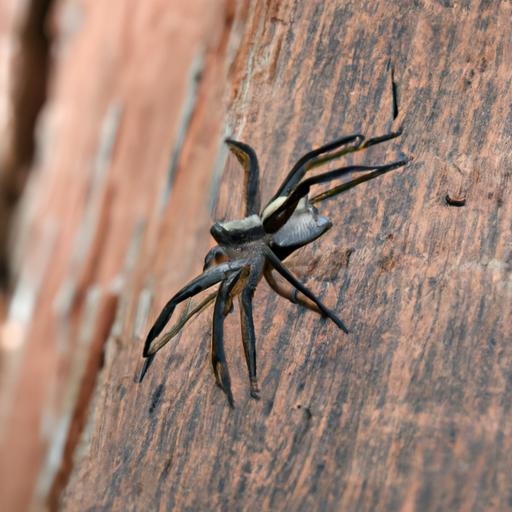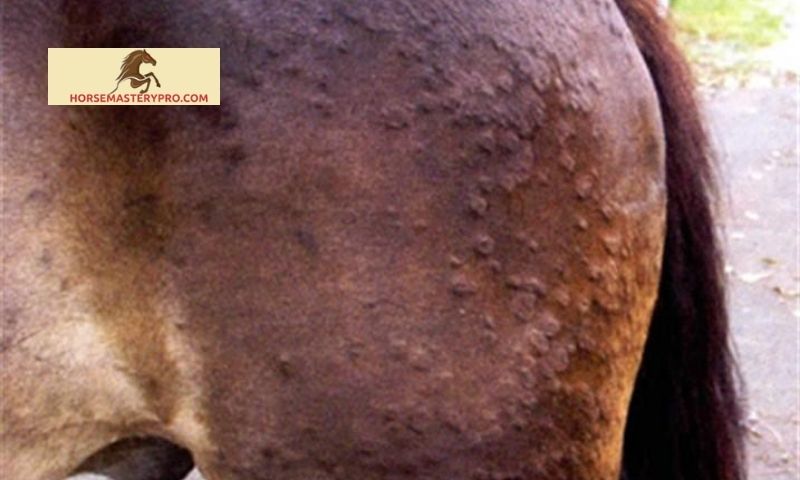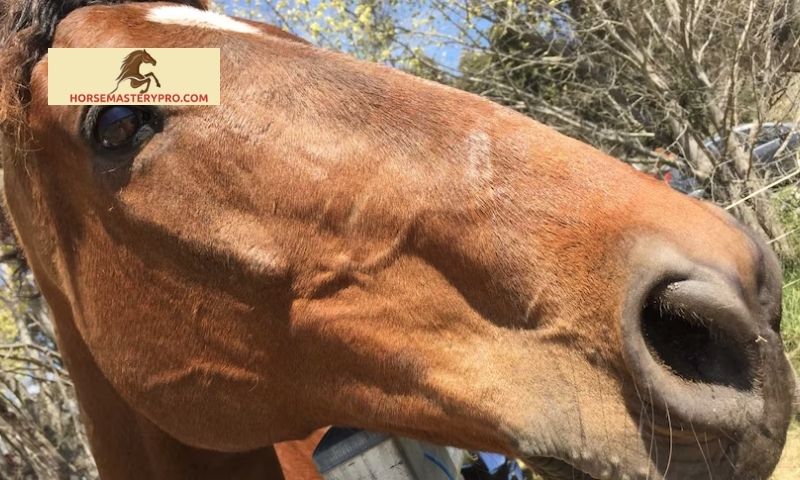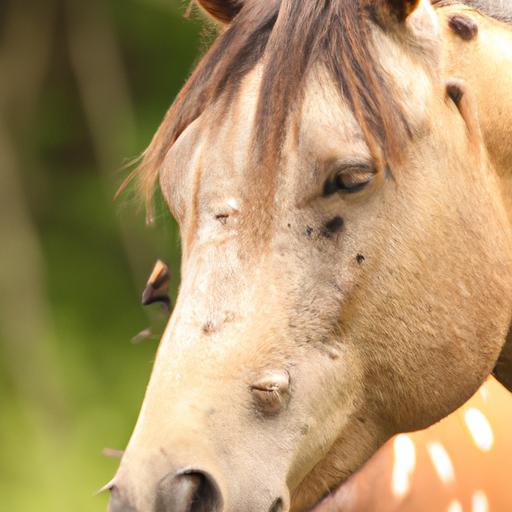Learn how to identify, treat, and prevent spider bites in horses. Discover immediate first aid measures, treatment options, and potential complications.
Introduction

When it comes to our beloved horses, their health and well-being are of utmost importance. As responsible horse owners, we strive to protect them from various threats, including spider bites. In this article, we will delve into the world of spider bites in horses, exploring the importance of understanding and preventing such incidents to ensure the safety and comfort of our equine companions.
Spider bites can have detrimental effects on horses, causing discomfort, pain, and even serious complications. By familiarizing ourselves with the signs and symptoms of spider bites, we can promptly identify and address them. It is crucial to differentiate spider bites from other insect bites or skin issues, enabling us to provide the appropriate care and treatment.
Now, let’s shed some light on the main types of spiders responsible for these bites. While there are various spiders that can cause harm to horses, some species pose a higher risk than others. Understanding their habits and habitats will help us take proactive measures to keep our horses safe.
Remember, prevention is always better than cure. So, let’s dive into the next section to explore the identification techniques for spider bites in horses and equip ourselves with the knowledge to protect our equine friends.
Identifying Spider Bites in Horses

Signs and Symptoms of Spider Bites in Horses
When it comes to identifying spider bites in horses, being aware of the signs and symptoms is crucial. While each horse may react differently, there are common indicators to look out for. Keep a keen eye on your equine companion for the following symptoms:
- Localized Swelling and Redness: Spider bites often result in localized swelling and redness at the site of the bite. Keep an eye out for any abnormal swelling or discoloration on your horse’s skin.
- Pain and Sensitivity: Horses may exhibit signs of pain or discomfort, particularly when pressure is applied to the affected area. Watch for any signs of tenderness or sensitivity during grooming or routine care.
- Itching and Irritation: Spider bites can cause itching and irritation, leading horses to scratch or rub the affected area against objects. Excessive scratching or rubbing may indicate a potential spider bite.
Common Areas Where Spider Bites Are Typically Found on Horses
Spiders tend to target specific areas on a horse’s body. Understanding these common areas can help in the identification process. Keep an eye on the following regions:
- Legs and Lower Body: Spiders often crawl onto the lower body and legs of horses, making them susceptible to bites in these areas. Check for any unusual marks or reactions on the limbs and lower belly.
- Muzzle and Face: Horses may accidentally come into contact with spiders while grazing or exploring. Pay attention to any signs of bites around the muzzle, lips, or face.
- Neck and Withers: Spiders can crawl onto the neck and withers of horses, especially when they are resting or grazing. Regularly inspect these areas for any signs of bites or reactions.
Differentiating Spider Bites from Other Types of Insect Bites or Skin Issues
It’s essential to differentiate spider bites from other types of insect bites or skin issues that horses may encounter. Here are a few key points to consider:
- Distinctive Bite Marks: Spider bites may leave characteristic bite marks, such as small puncture wounds or a pair of fang marks. Pay attention to the appearance of the affected area.
- Localized Symptoms: Unlike some allergic reactions or skin issues that can cause general discomfort or itching all over the body, spider bites typically manifest as localized symptoms around the bite site.
- Observation and Context: Observe your horse’s behavior and any environmental factors that may contribute to the presence of spiders. This information can help you determine whether a bite is more likely to be caused by a spider or another source.
By being vigilant and familiarizing yourself with these signs and distinctions, you can promptly identify spider bites in horses and take appropriate measures to address them. In the next section, we will explore the types of spiders that pose a risk to our equine friends.
Types of Spiders that Bite Horses

Description of the Most Common Spiders Known to Bite Horses
When it comes to spider bites in horses, it is essential to have knowledge about the spiders that pose a potential threat. Here are some of the most common spiders known to bite horses:
- Black Widow Spiders: These venomous spiders are easily recognizable by their shiny black bodies and distinctive red hourglass-shaped markings on their undersides. Found in various regions, black widow spiders prefer dark, sheltered areas such as barns, sheds, or hay bales.
- Brown Recluse Spiders: Also known as the violin spiders, brown recluse spiders have a brown coloration and a distinct dark violin-shaped marking on their backs. They are typically found in warm, dry areas, such as hay storage, feed rooms, or unused equipment.
Geographic Distribution and Habitats of These Spiders
The distribution and habitats of spiders that bite horses can vary depending on the species. While black widow spiders are found in many parts of the world, brown recluse spiders are more commonly found in the southern and central United States. However, it is important to note that spider populations can exist in other regions as well.
These spiders tend to seek shelter in dark, undisturbed areas. Horse stables, barns, and other storage areas provide ideal hiding spots, making them potential habitats for these spiders. Understanding their preferred environments can help us implement effective preventive measures.
Behavioral Characteristics and Potential Risks Associated with Each Spider Species
Both black widow and brown recluse spiders are known for their secretive nature. They prefer to hide in crevices, corners, or dark spaces, making accidental encounters with horses more likely.
Black widow spider bites can be particularly dangerous due to their potent neurotoxic venom. They can cause muscle pain, stiffness, tremors, and in severe cases, paralysis. On the other hand, brown recluse spider bites can lead to necrotic skin lesions, which may require extensive veterinary care.
By understanding the behavioral characteristics and potential risks associated with these spider species, we can take proactive steps to minimize their presence and protect our horses from their bites.
Stay tuned for the next section, where we will discuss crucial prevention and control measures to keep spiders at bay and ensure the safety of our equine companions.
Prevention and Control Measures
Keeping our horse stables and pastures free from spiders is a crucial step in preventing spider bites. By implementing effective prevention and control measures, we can create a safer environment for our equine friends. Let’s explore some practical strategies to minimize spider populations and protect our horses.
Creating a Spider-Free Environment
One of the key steps in prevention is eliminating potential spider habitats. Regularly clean and declutter the stable and pasture areas to remove any hiding spots or webs. Pay special attention to dark corners, crevices, and undisturbed areas where spiders tend to thrive. By maintaining a clean and organized environment, we can significantly reduce the chances of spider encounters.
Regular Inspection and Cleaning Routines
Frequent inspections are essential to identify any signs of spider infestations and take immediate action. Regularly examine the stable walls, ceiling, and corners for spider webs or egg sacs. If you spot any, remove them carefully to discourage spiders from returning. Additionally, keep the surrounding areas clean and free from debris, as clutter provides ideal hiding places for spiders.
Utilizing Effective Spider Repellents and Deterrents
To reinforce your prevention efforts, consider using spider repellents and deterrents. There are various commercially available products specifically designed to repel spiders. These can be applied to the stable walls, doors, and windows to create an unfavorable environment for spiders. Natural remedies like essential oils, such as peppermint or citrus, can also act as effective repellents.
Implementing Physical Barriers and Exclusion Techniques
Another effective approach is to implement physical barriers and exclusion techniques to prevent spiders from accessing your horses. Seal any cracks or entry points in the stable structure to minimize the chances of spider infiltration. Use screens on windows and doors to keep spiders out while allowing for proper ventilation. Additionally, consider installing fine mesh or netting around the perimeter of the pasture to create a barrier against spiders.
By incorporating these prevention and control measures, we can significantly reduce the risk of spider bites in horses. However, it is important to remember that even with these precautions, occasional encounters may still occur. In the next section, we will explore the appropriate steps to take when dealing with spider bites in horses, ensuring their prompt treatment and well-being.
Conclusion
As we conclude our exploration of spider bites in horses, it is evident that understanding, prevention, and prompt treatment are key in safeguarding our equine companions from the potential harm caused by these arachnids. By being vigilant and proactive, we can significantly reduce the risk of spider bites and ensure the well-being of our horses.
Throughout this article, we have learned to identify the signs and symptoms of spider bites in horses, enabling us to take immediate first aid measures when necessary. However, it is essential to recognize when professional veterinary assistance is required. If you notice severe symptoms or suspect a venomous spider bite, consult your veterinarian without delay.
Treatment options for spider bites in horses vary depending on the severity of the bite. Mild cases may only require local wound care and pain management, while more severe bites may necessitate additional interventions such as antivenom administration or systemic medications. It is crucial to work closely with your veterinarian to determine the most appropriate treatment plan for your horse’s specific situation.
Furthermore, it is important to be aware of potential complications and long-term effects of spider bites in horses. While most cases resolve with proper care, some may lead to secondary infections, allergic reactions, or tissue necrosis. Regular monitoring and follow-up with your veterinarian will help ensure any complications are promptly addressed.
At horsemasterypro.com, we prioritize the health and well-being of horses. By staying informed about spider bites and implementing preventive measures, we can create a safer environment for our equine companions. Let us continue to educate ourselves, share knowledge, and support each other in our journey of horse care and mastery.
Remember, your horse’s safety is in your hands. Together, we can protect them from the potential harm of spider bites and provide them with the happy and healthy lives they deserve.
Stay tuned for more informative articles and resources on horsemasterypro.com, where we are dedicated to helping you become the best horse owner you can be.


